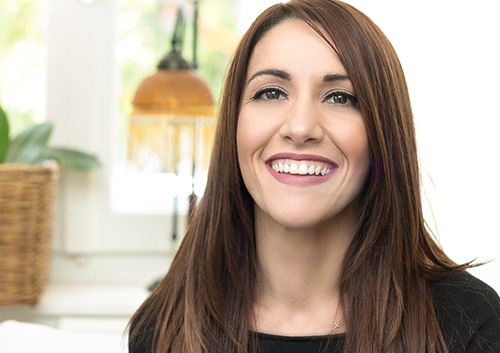October 3rd, 2018

If this is your child’s first holiday season with braces, here are some tips on how to help children get the most enjoyment from these celebrations without compromising their braces or leaving them feeling left out of the festivities.
Halloween
When you think dental health, “Halloween” is not usually the first thing that comes to mind. Halloween can be tricky, but with some planning and intervention, you can make sure your child doesn’t miss out on the treats that make the holiday a favorite.
Braces present other challenges besides dealing with the scary amount of sugar in every trick-or-treat bag. Certain treats can be a challenge to clean from braces, and can even cause broken brackets and wires. How to avoid these frightful results?
- Go through your child’s treat bag when you get home after neighborhood trick-or-treating. Anything which can damage braces, such as regular gum, candy with nuts or caramel, or hard or chewy candies should be discarded. Perhaps you and your child can choose a selection of soft candy such as plain chocolate and peanut butter cups to trade for those tricky treats. Your child’s favorite soft fruits, cupcakes, and cookies could also be safe substitutes.
- Party time? Candy apples, bowls of candy corn, and popcorn balls are favorite treats at Halloween parties, but very bad for braces. Help your child recognize what should be avoided before attending, and suggest safe options like soft cupcakes.
- Finally, even safe treats will leave more sugar than normal in your child’s mouth and therefore more potential for plaque build-up. Brush and floss more often, if needed, and rinse regularly with water.
Talk candy guidelines over in advance with your child. If you’d like, Dr. Kathleen Tavarez can recommend safe alternatives. With your help, Halloween won’t be a fearsome experience for you or your trick-or-treater.
Thanksgiving
Now, this is a holiday to be thankful for! Almost all of your traditional favorites are perfect for family members with braces.
- Appetizers: Offer soft food options such as silky cheeses and deviled eggs instead of crunchy vegetables, chips, and nuts.
- Dinner: Turkey is a required dish on many tables, and no need to miss out! Just make sure pieces are bite-size and off the bone. Creamy mashed potatoes and gravy and jellied cranberry sauce are also braces-friendly traditions. Any cooked vegetable should be fine, but do cut the corn from the cob first. Dressing is a great side dish if your child avoids any crunchy tops and edges, as are soft, nut-free rolls and muffins.
- Dessert: Pumpkin pie, cheesecake, and apple pie with ice cream are all safe (and delicious) choices. Leave the pecan pie, caramel sauce, and anything nutty or chewy off your child’s menu. And remember to brush and floss carefully after the feast!
If you are concerned that following the usual food guidelines might be a little more difficult during this time of year, talk to us. Dr. Kathleen Tavarez and our team are happy to suggest ways to make your child’s first holidays with braces memorable for all the right reasons. The last thing you’ll want is an emergency visit to our Menlo Park or San Carlos, CA office!
September 26th, 2018

Orthodontic treatment should begin earlier than most parents are apt to assume. According to the American Association of Orthodontists, orthodontic treatment should start at around seven years of age.
Dr. Kathleen Tavarez can evaluate your child’s existing and incoming teeth early on to determine whether treatment might be necessary or not.
What is early orthodontic treatment?
Early orthodontic treatment usually begins when a child is eight or nine years old. In stage one, bite problems such as underbites and the jaw’s growth pattern are corrected. It can also help to make room in the mouth for the permanent teeth to take their proper places as they come in, which reduces the chance that the patient will require extractions later, due to overcrowding.
Does your child need early orthodontic treatment?
If you notice any of the following characteristics in your son or daughter, you may want to have a chat with Dr. Kathleen Tavarez.
- Early loss of baby teeth (before age five)
- Late loss of baby teeth (after age five or six)
- Your child’s teeth do not meet properly or at all
- Your child is a mouth breather
- Front teeth are crowded (you probably wouldn’t see this until your child is about seven or eight)
- Protruding teeth, typically in the front
- Biting or chewing difficulties
- A speech impediment
- Your child’s jaw shifts when he or she opens or closes the mouth
- Your child is older than five years and still sucks a thumb
What are the benefits of seeking orthodontic treatment early?
There are many benefits to early orthodontic treatment. One of the biggest is that, because a child’s jaw and bones are soft and pliable, corrective procedures such as braces can work much faster than they do for adults.
Treatment at our Menlo Park or San Carlos, CA office can enable your child to avoid lengthy procedures, extraction, or surgery in adulthood. Early orthodontic care will give your son or daughter a healthy, stable smile.
September 19th, 2018

These days, it’s become more common to see adults at our office getting their teeth straightened with Invisalign clear aligners . . . that is, if you can see them! Whether they are seeking to overcome the stigma that “braces are just for kids,” or simply want straighter teeth without a mouth full of metal, Invisalign is an effective and easy solution.
According to the American Association of Orthodontists, from 1994 to 2010 the number of adults 18 and older who request braces increased by 58 percent: from 680,000 to 1.1 million a year. Many adults enjoy how discreet the aligners are and that the user doesn’t need to avoid any foods or make dietary changes the way you would with traditional braces. Also, each treatment is unique to the patient.
With an Invisalign treatment, you can expect to enjoy the following benefits over traditional braces:
- The total treatment time is more precise with Invisalign because your treatment is modeled by a computer. Traditional braces depend more on an estimate and aren’t as exact.
- You’ll make fewer trips to our Menlo Park or San Carlos, CA office, since you’re able to change your trays on your own every few weeks or whatever is prescribed.
- Without brackets to place over your teeth, there’s less risk to the health of your tooth enamel.
- Invisalign aligners are clear and practically invisible, so most people won’t even know you’re wearing them!
If you’re interested in Invisalign as a treatment option, please let Dr. Kathleen Tavarez know. We’d be happy to help you on your journey to a straighter, healthier smile!
September 12th, 2018

In a perfect world, we would all jump out of bed ready to greet the day with a big smile and a toothbrush close at hand to clean our teeth immediately. But if you can’t even find your toothbrush before you’ve had your first cup of coffee, does it really make a difference if you brush and floss after breakfast? Perhaps! Let’s talk biology.
Normal saliva production during the day benefits our teeth and mouths in surprising ways. Saliva washes away food particles to keep our teeth cleaner. It contains cells which combat bacteria and infection. It even provides proteins and minerals to help protect our teeth from decay. But saliva production slows dramatically as we sleep, and the amount of bacteria in our mouths increases. While one of the nasty—and obvious—side effects of bacterial growth is morning breath, there is an invisible effect, which is more harmful. Bacteria in plaque convert sugar and carbohydrates into acids which attack our gums and enamel and can lead to both gingivitis and cavities.
- If You Brush Before Breakfast
Brushing and flossing first thing in the morning removes the plaque that has built up during the night and takes care of many of the bacteria who are ready to enjoy the sugar and carbs in that breakfast with you. If you brush before eating breakfast, rinse your mouth with water after your meal, floss if needed, and you are good to go.
- If You Choose to Brush After Breakfast
But if you decide that doughnut simply can’t wait, you should ideally postpone brushing for 20-30 minutes after your meal. Of course, these are minutes in which bacteria can make use of those new sugars and carbohydrates. So why shouldn’t you brush immediately after eating? Many foods and beverages, especially acidic ones such as grapefruit and orange juice, can weaken the surface of your teeth. If you rinse with water after eating and wait at least 20-30 minutes before brushing, your enamel will be “remineralized” (another benefit of saliva) and ready for cleaning.
No matter if you take a “seize the day” approach and brush first thing in the morning, or a “seize the doughnut” approach and brush soon after eating, the important word here is “brushing.” Dr. Kathleen Tavarez and our Menlo Park or San Carlos, CA team are happy to make suggestions as to the best morning routine for you. One thing is certain: if you give your teeth and gums two minutes of careful brushing and flossing in the morning, you can’t help but start your day off right!











 Website Powered by Sesame 24-7™
Website Powered by Sesame 24-7™